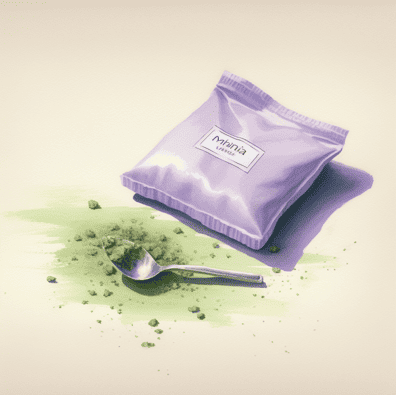
It was a frantic morning for Abby, as usual. As she darted around her sunlit kitchen, balancing her work laptop in one hand and a piece of avocado toast in the other, she thought again how difficult it was to balance her health with her career. Lately she had been trying to include matcha in her daily diet, with it’s host of health and beauty benefits, but even that was a struggle some days. The battle of matcha tea bag vs powder nudged at the back of her mind. Using tea bags would be more convenient during these frantic morning, but she found herself torn between the traditional matcha powder, a fine, bright green dust revered in tea ceremonies, and the practical matcha tea bags that could easily fit into her busy lifestyle.

Abby had sampled the matcha tea bags before, during busy mornings when she barely had the time to steep the tea bag in her cup. The result was a subtle, light brew that was refreshing, if not as deeply flavourful as she expected. But then again, the convenience of the tea bags was a godsend.
Matcha powder, on the other hand, came with a charm of its own. She remembered the weekend when she first whisked the bright green powder in hot water, the aroma filling her kitchen. The taste was more robust, the experience almost meditative. It was a weekend luxury, yes, but a luxury nonetheless.
Skip to: The Grand Comparison
Abby paused, considering her options. Could she find a way to embrace the best of both worlds, the richness of matcha powder and the convenience of matcha tea bags?
Over the next week, Abby found her rhythm. On the busy weekdays, she started her mornings with a cup of matcha tea from a tea bag, savouring the subtle flavour as she answered her emails. And come the weekends, when she had time to relax, she indulged in the ceremonial brewing of matcha powder, taking the time to whisk the vibrant powder into a frothy, rich brew.

Skip to: The Beauty Benefits of Matcha Tea Bags vs Powder
Through trial and discovery, Abby found her answer to the matcha tea bag vs powder question. She realised that matcha, in whatever form, had a place in her life. It wasn’t a choice between two options, but a combination that served her wellness journey, and more importantly, her happiness. And so, Abby found peace in her matcha conundrum, one soothing, vibrant cup at a time.
Don’t want to read the whole post?
In the end, the choice between matcha tea powder and matcha tea bags comes down to your lifestyle, your flavour preferences, and how much time you wish to dedicate to the art of tea preparation. So, are you ready to find your perfect matcha?
You might also like:
1. Matcha Magic: The Power of Green Tea for Acne-Free Skin
2. Sencha vs. Matcha: Which Green Tea is Right for You?
3. Radiant Skin, Naturally: 5 Plant-Based Foods for Beautiful Skin
Introduction: Your Healthful, Luscious Journey with Matcha
In the enchanting world of tea, there’s nothing quite as enticing as matcha. But, between your yoga classes, plant-based cooking experiments, and all those little moments you steal for self-care, you’re always on the go. So, when it comes to savouring your cup of wellness, the question arises – matcha tea bag or matcha powder?
The truth is, each form comes with its own allure and advantages.
This guide will help you navigate through the leafy labyrinth and decide what best suits your sublime lifestyle.
Matcha tea bag vs powder: A Tale of Two Forms
Originating from the same rich camellia sinensis plant, both matcha tea bags and matcha powder have roots grounded deep in Japanese tradition. However, their paths diverge in how they are processed, consumed, and even experienced.
Matcha Tea Powder
This bright green powder, often referred to as the ‘real thing,’ is made by finely grinding entire green tea leaves. The result? A rich, concentrated form of green tea that encompasses the entirety of the leaf, nutrients and all. When you whisk a teaspoon of matcha powder into hot water, you’re inviting a little bit of ceremonial tranquility into your bustling day.
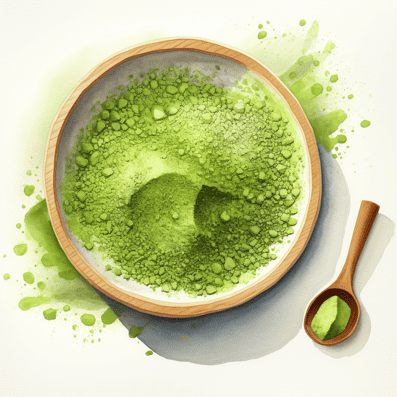
Matcha Tea Bags
Seeking convenience in the midst of your daily rush? Matcha tea bags might be your new best friend. These contain a blend of ground tea leaves and matcha, ready to steep and serve. While they may not deliver the same vibrant hue or rich, full-bodied flavour as matcha powder, they are perfect for on-the-go tea drinkers who value speed and ease.
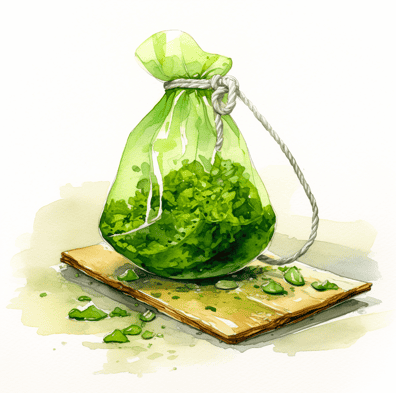
Of course, matcha is just one type of tea in a world that also cherishes regular green tea and the aromatic complexities of oolong tea. So embrace the decision that works best for you.
Now, a deep dive into the preparation processes for each tea, to better understand their unique attributes.
You may also like: Hojicha vs Matcha Japanese Tea: To Sip or to Whisk?
The Art of Preparation: Matcha Powder vs Tea Bags
The way you prepare your matcha can dramatically affect your experience, from the depth of flavour to the very rituals that surround it. Let’s explore the preparation methods for both forms of this umami beverage.
Matcha Tea Powder: The Traditional Method
With matcha powder, you are in for a treat that goes beyond just taste; it’s a meditative ritual that allows you to find calm amid the chaos.
- First, you take your bright green, fine matcha powder and place a teaspoon of it into a bowl.
- Then, pour in hot water — not boiling, just a soothing steamy heat. This allows the powder to dissolve whilst maintaining matcha’s nutritional integrity.
- Next comes the traditional bamboo whisk, to whisk you away into the world of the tea ceremony. With this, you blend the matcha powder and hot water together until it forms a frothy concoction.
- Finally, sip slowly and enjoy the deep, nuanced flavours.
This method may require a little more time and effort, but the reward is a richer, full-bodied cup of matcha tea that’s brimming with tradition and mindfulness.
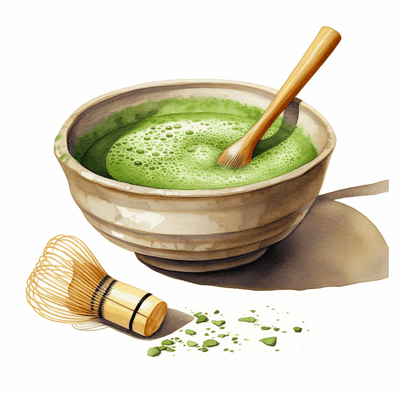
You may also like: Ceremonial vs Culinary Matcha: Which is Right for You?
Matcha Tea Bags: The Quick Fix
Matcha tea bags, on the other hand, cater to your fast-paced life with a touch of grace.
- All you need to do is take a matcha tea bag and place it in your cup.
- Pour hot water over the tea bag and let it steep for a few minutes.
- Remove the tea bag, and voila! Your matcha is ready to enjoy.
While matcha tea bags might not provide the same depth of flavour as matcha powder, they offer a practical and efficient way to incorporate the health benefits of matcha into your day.
In the end, the choice between matcha tea powder and matcha tea bags comes down to your lifestyle, your flavour preferences, and how much time you wish to dedicate to the art of tea preparation. So, are you ready to find your perfect matcha?
The Grand Comparison: Taste, Quality, Health, and Beauty Benefits
Now that you know the basic differences and preparation methods, let’s dive into the heart of the matter. Here’s a direct comparison between matcha tea bags and matcha powder, from taste and quality to health and beauty benefits.
Taste
Matcha Powder: When it comes to taste, matcha powder is the winner. It has a distinct, vibrant flavour profile that’s rich and slightly sweet with a hint of umami. This is because the entire leaf is used, leading to a deeper, more complex taste.
Matcha Tea Bags: The taste of tea from matcha tea bags tends to be a bit more diluted and less vibrant. That’s not necessarily a bad thing – it can make for a milder, easier-to-drink tea. However, for the true taste of matcha, the powder form is superior.
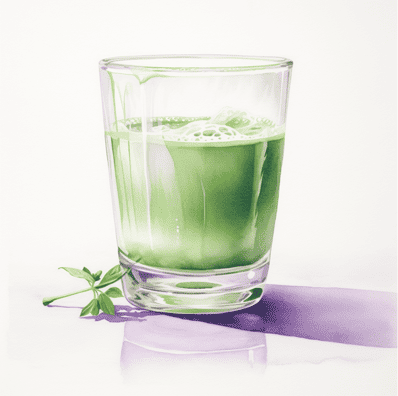
Quality
Matcha Powder: If you’re seeking the best quality, opt for matcha powder. The entire green tea leaf is ground into a fine powder, meaning you’re getting all the nutrients and flavour packed in each leaf. Plus, the bright green colour of quality matcha powder is a visual delight.
Matcha Tea Bags: While still a good option, matcha tea bags might not offer the same quality as the powder. The tea leaves are often more coarsely ground, and the flavour and nutrient profile can be less concentrated.
You may also like: From Bitter to Better: Distinguishing Good Matcha vs Bad Matcha
Health Benefits
Matcha Powder: The health benefits of matcha powder are significant. It’s packed with antioxidants that help combat free radicals and boost your overall health. Plus, the high amino acid content can improve brain function and promote relaxation.
Matcha Tea Bags: Matcha tea bags also deliver health benefits, though not as concentrated as matcha powder. They still offer antioxidants and a decent amount of amino acids.
Beauty Benefits
Matcha Powder: Matcha powder, rich in antioxidants and anti-inflammatory properties, helps improve skin health by reducing redness, acne, and premature ageing. It can also boost your metabolism, promoting weight loss and contributing to a healthy, glowing look.
Matcha Tea Bags: While not as potent as the powder, matcha tea bags can still aid in maintaining healthy skin and promote weight loss, thanks to their antioxidant content.

In conclusion, both matcha powder and matcha tea bags have their merits, and your choice should depend on your taste preferences, health goals, and lifestyle.
Matcha Beyond the Cup: Lattes and More
You don’t always have to sip your matcha from a tea cup — not when it has such a versatile nature. The rich, complex flavour of matcha powder and the convenience of matcha tea bags offer a multitude of possibilities to ensure that your daily dose of wellness is never a dull affair. Let’s explore some delightful ways to enjoy matcha beyond the traditional brew.
1. Matcha Lattes
A favourite among the crowd, matcha lattes combine the robust flavours of matcha with the creaminess of milk (or your favourite non-dairy alternative). You can make a latte using either matcha powder or matcha tea bags, but remember, the powder will give you a stronger matcha flavour. Whether you prefer it iced or hot, a matcha latte is a luxurious treat that marries health and indulgence beautifully.
2. Matcha Smoothies
For those post-workout moments or midday pick-me-ups, a matcha smoothie can be just what you need. Blend in matcha powder with your favourite fruits, plant-based milk, and a dash of sweetener for an energising, antioxidant-rich smoothie. It’s your fitness regime’s best friend, condensed into a delicious, vibrant green drink.
Try this: Matcha Avocado Smoothie at The Conscious Plant Kitchen
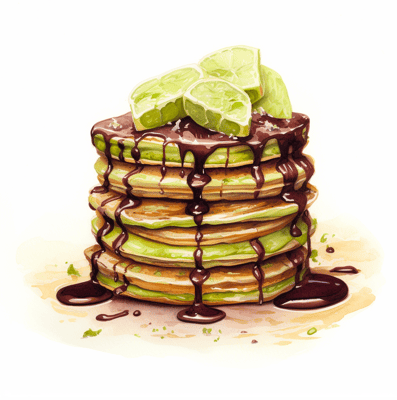
3. Matcha Infused Foods
Unleash your inner culinary goddess by incorporating matcha into your meals. Think matcha pancakes for breakfast, a sprinkling of matcha powder on your avocado toast, or even matcha-infused hummus. With matcha, the world of green, healthful food is yours to conquer.
Try these: Vegan Matcha Pancakes at Blooming with Flavour
4. Matcha Ice Cream
Why not end your day on a sweet note with some homemade matcha ice cream? Using matcha powder, you can prepare a delightful, creamy dessert that’s brimming with the unique flavour of matcha. Who said you can’t enjoy a dessert that’s indulgent and packed with antioxidants?
Try this: 3-Ingredient Matcha NiceCream at All Purpose Veggies
5. Matcha Tea Bags in Cold Water
In the heat of summer, a refreshing, cold-brew matcha drink might be just what you need. Simply place a matcha tea bag in cold water and let it steep for a couple of hours. The result is a subtly flavoured, refreshing beverage to keep you cool and hydrated.
These are just a few of the myriad ways to enjoy the benefits of matcha in your daily life. From the versatile matcha powder to the handy matcha tea bags, you’ve got a whole world of green goodness at your fingertips. So, go ahead, experiment, and find your favourite way to enjoy this powerhouse of wellness.
Conclusion: Embracing Your Matcha Journey
As we venture back from our exploration of the world of matcha, it’s clear that both matcha tea bags and matcha powder have a place in the heart of a health-conscious goddess like you. Whether you’re craving the authentic, rich flavours of matcha powder or the convenience of matcha tea bags, both offer a unique way to embrace wellness.
The choice, ultimately, is a personal one. Matcha powder is for those who relish the tradition, taste, and full-bodied experience of a ceremonial brew. Matcha tea bags are your quick, practical companions for a fast-paced lifestyle, still delivering a touch of the health and beauty benefits that matcha is renowned for. Whichever path you choose in this leafy journey, rest assured that the benefits of matcha will always be at your fingertips.
So go ahead, lovely. Embrace your inner matcha goddess. Whisk, steep, blend, or sprinkle. The world of matcha is yours to explore, enjoy, and love.
Matcha powder vs tea bag FAQs
1. Why is matcha powder often described as a ‘fine’ powder?
Matcha powder is referred to as a ‘fine’ powder because of its ultra-smooth texture. It’s made by grinding the entire green tea leaves into a very fine, talc-like powder. This fine consistency allows it to blend seamlessly into hot water, creating a uniform, smooth tea.
2. Can I make matcha lattes using matcha tea bags?
Yes, you can. However, matcha lattes made with matcha powder will typically have a stronger, more authentic matcha flavour.
3. How much caffeine is there in a teaspoon of matcha powder?
A teaspoon of matcha powder typically contains around 70 milligrams of caffeine, which is significantly higher than regular green tea. This is because you’re consuming the entire leaf, not just an infusion.
4. What is the difference between matcha and other types of green tea?
While both come from the same Camellia sinensis plant, the key difference lies in the growing and processing methods. Matcha tea leaves are shade-grown and ground into a fine powder, which means you consume the whole leaf, while other green teas are typically infused and then discarded.
5. Why is the Camellia sinensis plant important for tea production?
Camellia sinensis is the plant species from which almost all true teas are derived, including green tea, black tea, white tea, oolong tea, and matcha. The different types of teas result from how the leaves of the Camellia sinensis plant are processed.
6. Is there a difference in weight loss benefits between matcha powder and tea bags?
Both forms of matcha can aid in weight loss, thanks to the high concentration of catechins, a type of antioxidant known to boost metabolism. However, since matcha powder uses the whole leaf, it may have a slight edge over matcha tea bags in terms of weight loss benefits.
7. How does the taste of matcha compare to other types of tea like oolong?
Matcha has a unique taste profile that’s rich, slightly sweet, and with a hint of umami. In contrast, oolong has a diverse flavour spectrum, ranging from sweet and floral to dark and roasted, depending on how it is processed.
8. Can you consume the entire leaf in a matcha tea bag?
Typically, matcha tea bags contain a blend of ground tea leaves and you steep them in water. However, unlike matcha powder, you do not consume the entire leaf with matcha tea bags.
9. What’s the best way to store matcha products?
To maintain the best quality and freshness, store matcha products in a cool, dark place, preferably in an airtight container. This protects it from light, air, and humidity that can degrade the quality and taste of matcha.
10. Is there a difference between matcha and regular green tea in terms of brain function benefits?
Both matcha and regular green tea contain caffeine and L-theanine, an amino acid that can improve brain function. However, matcha often contains higher levels of these compounds, meaning it might have a stronger effect on brain function than regular green tea.
ABOUT ME
Every woman’s skin and health can benefit by eating some more plants! I want to help you embrace the power of plant-based foods in simple and easy ways, so that you can lead a more beautiful life!
Life’s too short to not live your most beautiful, badass life.
